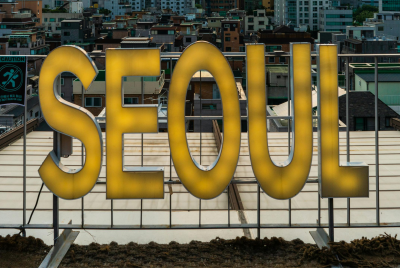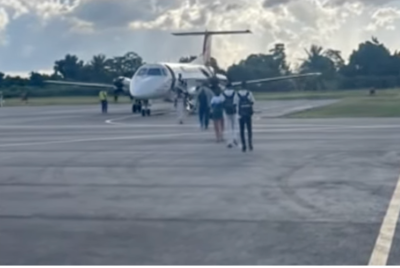EU Raked in £839M While Rejecting Over 1.7 Million Visa Applicants in 2024
African travellers, particularly from Comoros, Nigeria, and Algeria, bore the brunt of rejections

European Union's visa system generated a significant £839 million from applications, even as it turned away more than 1.7 million prospective visitors in 2024.
This considerable income sharply contrasts with the dashed hopes of countless individuals seeking entry, with a particularly disproportionate impact felt by travellers from African nations.
According to the European Commission, individuals seeking Schengen visas submitted 11.7 million applications in 2024. This total represents a 13.4 per cent increase from the 10.3 million visa requests made in 2023.
Schengen Visa Applications On The Rise
Fresh statistics from SchengenVisaInfo reveal a continuing rise in visa rejections, climbing from 1.6 million in 2023 to 1.7 million in the subsequent year. Schengen News reported that this marks a 4.4 per cent increase within that year.
Consequently, the costs associated with Schengen visa applications became steeper than the previous year, particularly for those whose requests were denied. This financial burden intensified further as the EU increased the Schengen visa application fee to €90 (£75.82) on 11 June 2024, making all applications generally more expensive.
Overall, applicants collectively spent €145 million (£122.16 million) on rejected applications, marking an 11 percent rise in expenses. This means €14.3 million (£12.05 million) more went towards visa applications that were ultimately denied when compared to 2023 figures.
To offer a fair estimate of the expenses applicants faced in 2024, Schengen News calculated the average cost of a Schengen visa application as €85 (£71.61). This figure reflects an average between the €80 (£67.40) fee charged during the first half of the year and the €90 (£75.82) fee from the second half.
EU's Visa Applications Generate Over €995 Million In 2024
The data shows that from more than 11.7 million applications, each estimated to cost an average of €85 (£71.61), the EU collected a total of €995,921,455 (£839038927.80). This represents a 20.5 percent increase from the €826 million (£695.88) received in 2023.
This surge could be influenced by the increase in visa prices to €90 (£75.82) and a general rise in the number of visa applications. As noted earlier, visa applications grew by 13.4 percent in 2024, climbing from 10.3 million to 11.7 million (£8.68 million to £9.86 million).
Even though overall expenses were greater in 2024, the proportion of money spent on rejected applications decreased compared to the previous year. In 2023, the cost of denied applications reached €130 million (£109.52 million), accounting for 15.8 per cent of the €826 million (£695.88 million) the EU collected from visa applications; however, in 2024, this share fell to 14.5 percent.
More precisely, the 1.7 million denied visa requests amounted to €145 million (£122.16 million), making up 14.5 percent of the €995.9 million (£839.02 million) the EU collected from visa applications. This means that, in 2024, applicants collectively forfeited €145 million (£122.16 million) due to rejected applications.
Nations With The Highest Visa Application Spending Last Year
Analysis reveals that the ten nationalities submitting the most visa applications in 2024 were also those incurring the most significant expenses, as the following list demonstrates:
- China: With 1.7 million applications submitted, Chinese applicants spent €151.2 million (£127.38 million). Of these, 80,703 were rejected, leading to €6.8 million (£5.73 million) in lost funds.
- Türkiye: Turkish citizens lodged 1.17 million applications, incurring €99.7 million (£83.99 million) in expenses. Some 170,129 applications were denied, costing them €14.5 million (£12.22 million).
- India: Indian applicants submitted 1.1 million applications, spending €94.2 million (£79.36 million). Rejected applications numbered 165,266, resulting in €14 million (£11.79 million) in lost expenses.
- Morocco: Moroccans filed 606,800 applications, with costs reaching €51.6 million (£43.47 million). A total of 115,774 applications were turned down, equating to €9.8 million (£8.26 million) in expenses.
- Russia: Russian applicants submitted 606,594 applications, spending €51.6 million (£43.47 million). With 44,885 rejections, €3.8 million (£3.20 million) in expenses were lost.
- Algeria: Algerians submitted 544,634 applications, costing €46.3 million (£39.01 million). A significant 185,101 applications were rejected, leading to €15.7 million (£13.23 million) in lost funds.
- Saudi Arabia: Saudi Arabian applicants filed 505,455 applications, with €43 million (£36.23 million) spent. Just 29,517 rejections meant €2.5 million (£2.11 million) in expenses were not recovered.
- United Kingdom: From 470,569 applications, UK residents spent €40 million (£33.70 million). Some 32,390 applications were rejected, resulting in €2.75 million (£2.32 million) in lost expenses.
- Thailand: Thai applicants submitted 265,243 applications, incurring €22.5 million (£18.96 million) in costs. Notably, 16,361 rejections resulted in €1.39 million (£1.17 million) in lost expenses.
- United Arab Emirates: Applicants from the UAE filed 260,229 applications, spending €22.1 million (£18.62 million). With 61,738 rejections, €5.2 million (£4.38 million) in expenses were not recouped.
African Travellers Bear The Brunt Of Rejections
However, when considering rejection rates, specifically nationalities with the highest proportion of rejected applications compared to their overall application numbers, applicants from Comoros faced the greatest financial impact – €149,090 (£125,615) was lost from 1,754 rejected applications out of 2,853 applications filed.
Many African countries are decrying the loss of millions of euros in Schengen visa rejections. In 2024 alone, they lost €60 million in non-refundable visa application fees.
— Muthoni Njakwe (@muthoni_njakwe) June 3, 2025
This means thousands of people paid the required €90 fee, submitted their documents, and still got… pic.twitter.com/ZR5towNZBb
Furthermore, Bangladeshis lost €1.7 million (£1.43 million), Pakistanis €2.9 million (£2.44 million), applicants from Guinea-Bissau €143,480 (£120,775), Senegalese €2.7 million (£2.27 million), Haitians €176,290 (£148,375), Nigerians €4.2 million (£3.54 million), Ghanaians €2.1 million (£1.77 million), Congolese €955,145 (£803,922), and Malians €387,600 (£326,304). Like in 2023, African countries continue to be hit hardest financially by visa rejection rates, with most countries on the list incurring the highest expenses hailing from the African continent.
Top Destination Countries For Schengen Visa Applications
Regarding countries that received the most visa applications and subsequently profited, France tops the list with over three million applications, generating €261.1 million (£219.7 million) in expenses. Spain comes in second, receiving 1.6 million applications, which amounted to €138.9 million (£116.9 million).
Germany received 1.5 million applications, bringing in €128.5 million (£108.1 million) in expenses, while visa applications to Italy totalled €104.8 million (£88.2 million) from 1.2 million applications received by their authorities.
The combined amounts generated from rejected applications by these five countries, which collectively received 63.6 per cent of all applications, total €633.5 million (£533.56 million) out of the €995.9 million (£838.78 million) that Schengen states earned from visa applications in 2024.
© Copyright IBTimes 2025. All rights reserved.






















